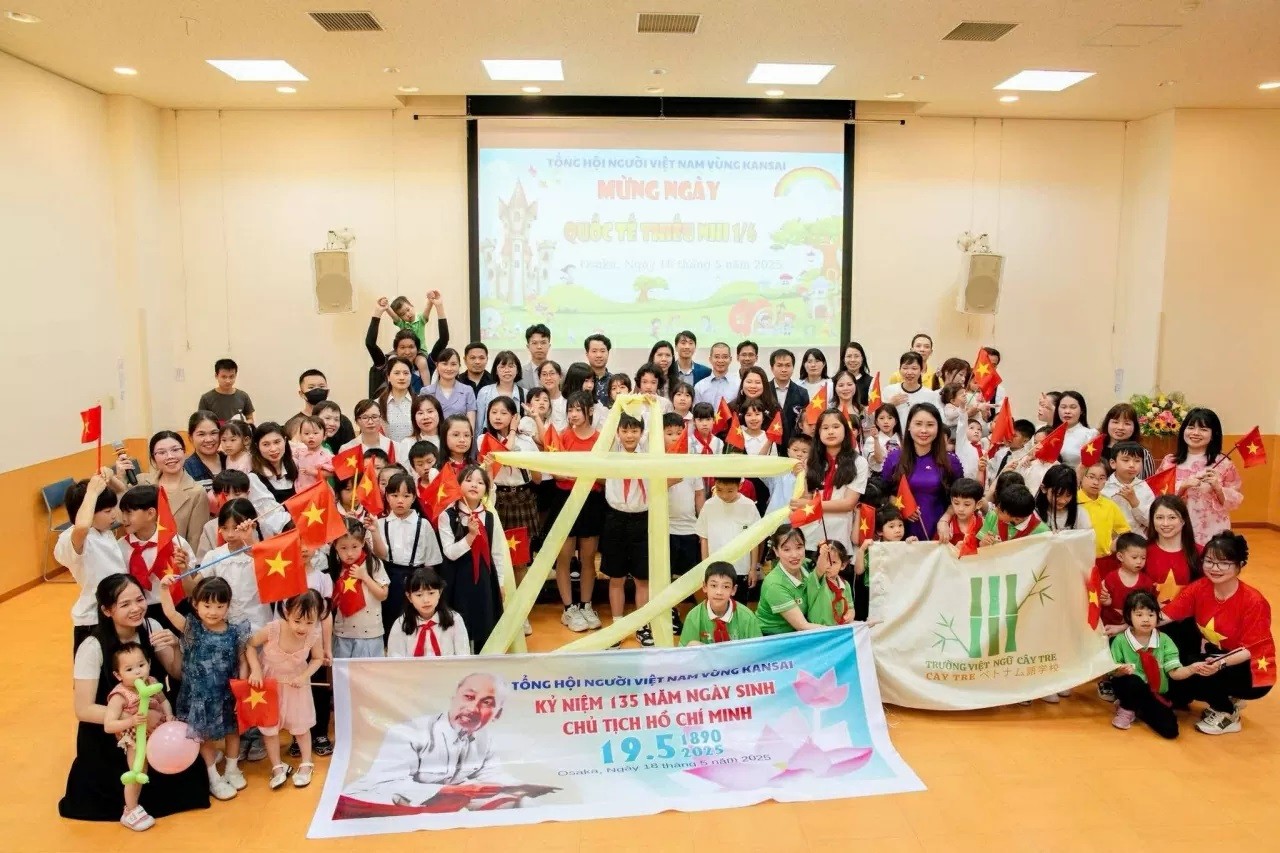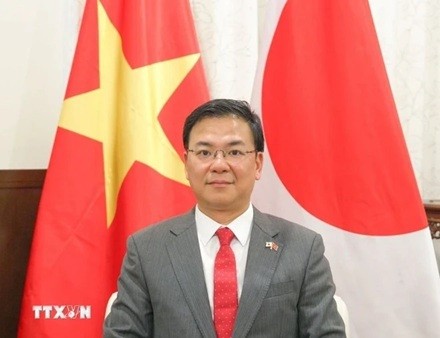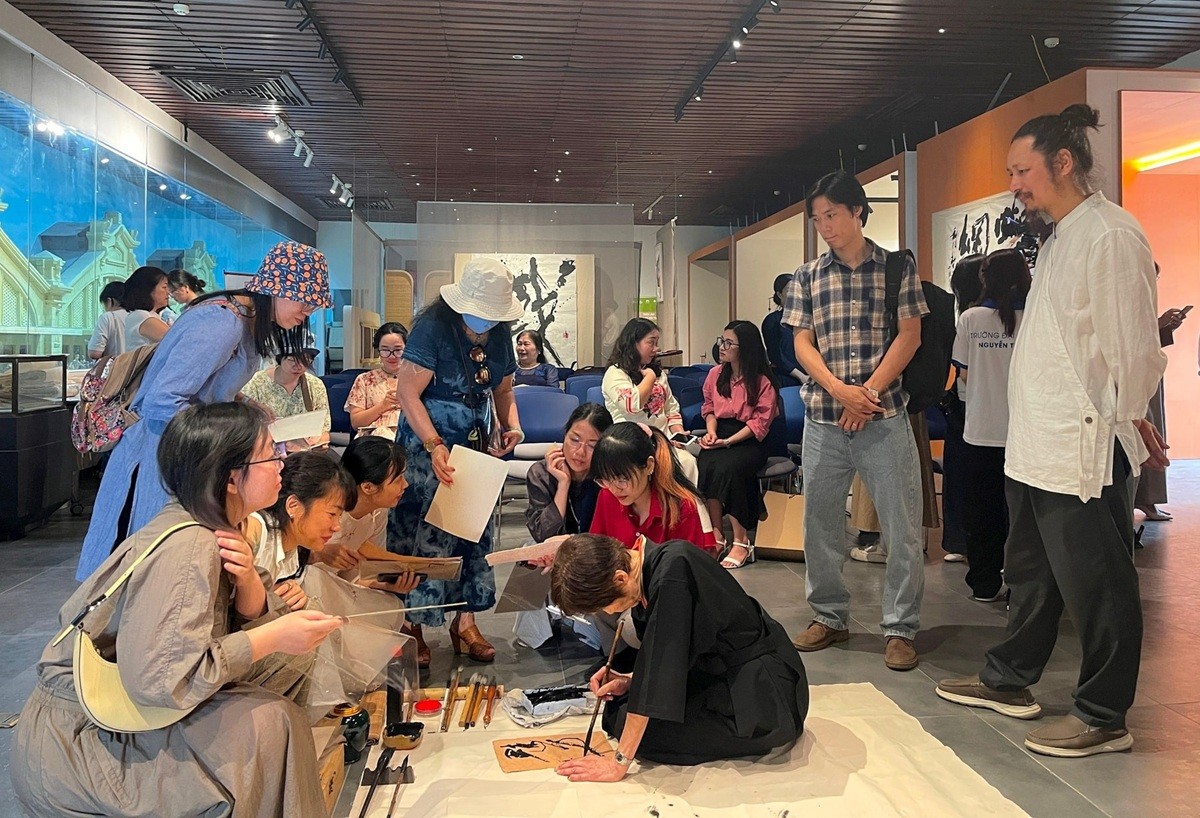Experience Yukata: A Taste of Japan in Hanoi
| Vietnamese Youth Enchanted by Japanese Culture | |
| New Initiative to Boost Vietnam, Japan Cooperation on Digital Transformation |
First Time Wearing Yukata
In mid-July 2024, the Japanese Embassy in Vietnam's Facebook page announced the event titled "Experience the Tanabata Festival Customs, Try on Yukata," under the theme "Experiencing Culture, Exploring the Future." The event took place from July 9 to July 17 at the Cultural Information Center of the Japanese Embassy in Vietnam on Van Phuc Street, Ba Dinh District, Hanoi.
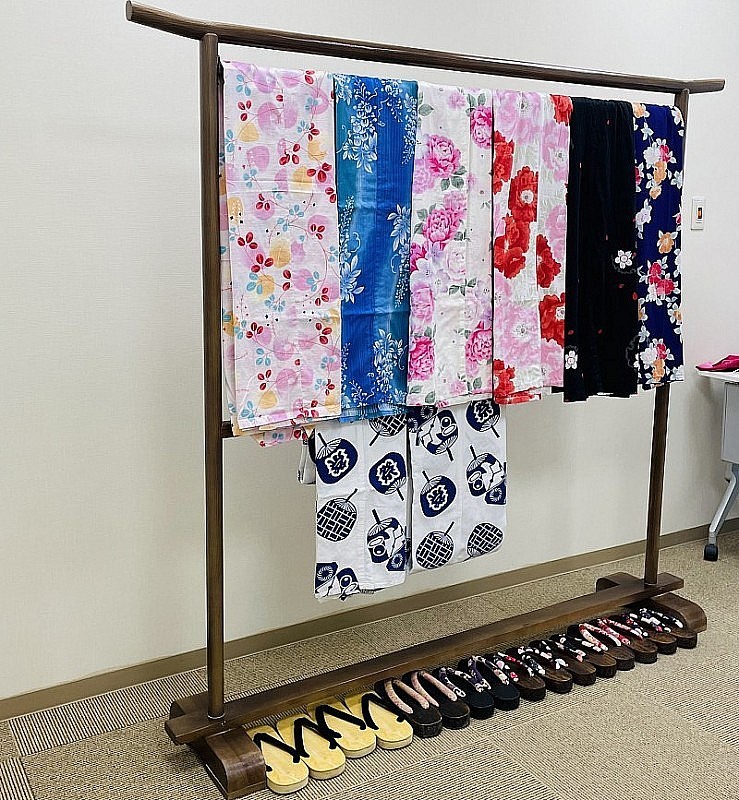 |
| The Yukata and wooden clogs are displayed at the experience event. (Photo: Thu Phuong) |
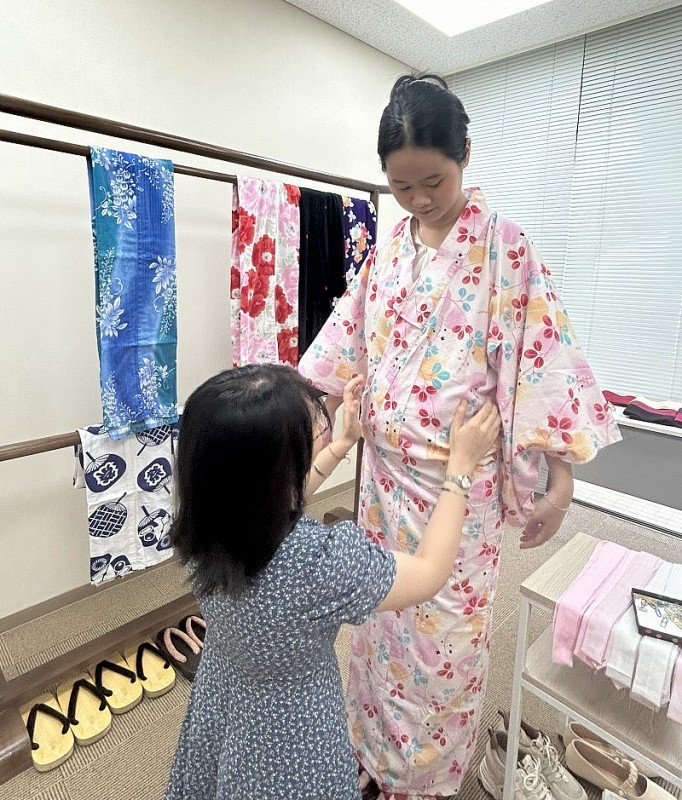 |
| Staff at the Japanese Cultural Information Center guide visitors on how to wear Yukata. (Photo: Bach Duong) |
Despite its small size of less than 20 m², the Yukata (traditional Japanese summer attire) display area was well-organized. The room's most attractive feature was a clothes rack neatly covered with vividly colored Yukata. Underneath, wooden clogs were carefully arranged.
Staff from the Japanese Cultural Information Center demonstrated how to wear Yukata. First, the wearer tucks the right flap inside and straightens the rear seam. Next, they bind the waist with two Himo, which are long, thin silk strings, usually in white or pink.
According to the center's staff, Yukata is typically worn by Japanese people during special summer occasions such as fireworks displays, local festivals, or visits to hot springs.
Made of breathable cotton and sewn in a single layer, Yukata keeps the wearer cool and comfortable in hot weather.
Yukata is unique because of its accessories, including the Obi sash and wooden clogs. Choosing accessories to match the outfit can create various styles. Warm-colored accessories stand out while matching tones provide an elegant feel.
Women often tie their hair up when wearing Yukata to show the nape of the neck, emphasizing their feminine and charming attractiveness.
Similarities between Vietnamese and Japanese Attire
“When I was a child, I loved animated films from the land of cherry blossoms. Today, wearing the traditional Yukata and learning about Japan's Tanabata festival, I felt like I was transforming into a character from my childhood movies. I hope there will be more similar activities so we have more space to experience and understand Japanese culture,” shared Bach Duong from Hoan Kiem District, Hanoi.
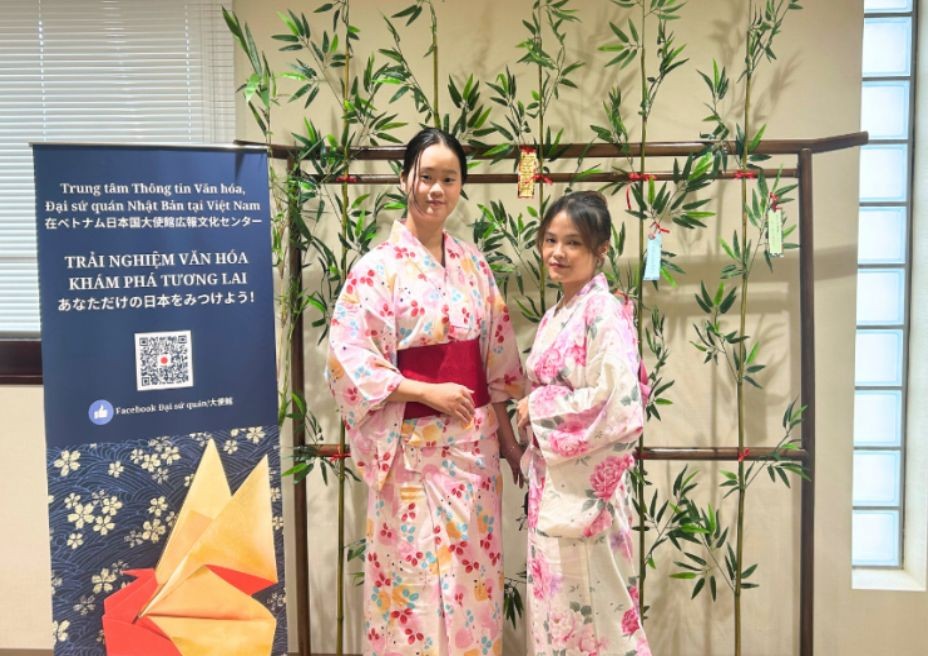 |
| Guests participated in the Yukata-wearing activities at the Japanese Tanabata Festival. |
According to Embassy staff, the Yukata used in the event was financed and sent to Vietnam by Japan's Ministry of Foreign Affairs to provide Vietnamese youth with the most authentic experience possible. Staff at the Japanese Cultural Center personally led participants through the technique of wearing Yukata, which requires particular skills.
Kano Haruka, Research Attaché at the Japanese Embassy in Vietnam, noted that the Embassy's events always highlight the similarities between the two countries' cultures.
"The Tanabata festival tale has similarities to that of Niu Lang and Zhi Nu in Vietnam. Traditional Japanese and Vietnamese costumes share the trait of being adapted and changed to meet the tastes of young people. Understanding these cultural links enables young people from both countries to have a deeper appreciation for Japanese and Vietnamese cultures," said the Japanese reseacher.
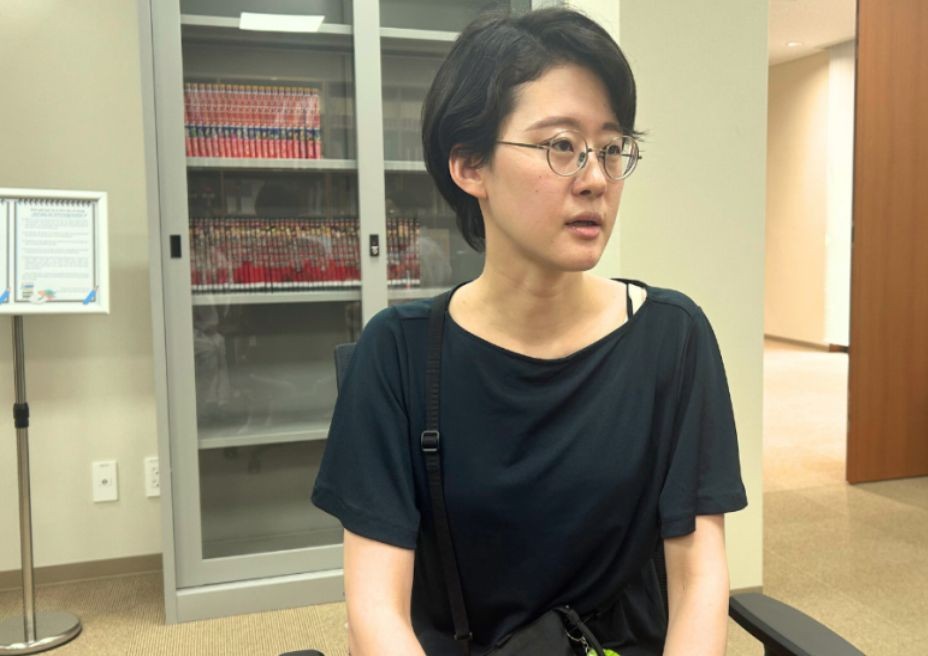 |
| Research Attaché at the Japanese Embassy in Vietnam Kano Haruka. (Photo: Bach Duong) |
She expressed her hope that through Japanese cultural exchange activities, the Vietnamese people, especially the youth, would have more opportunities to experience and understand the attire, thus appreciating the beauty of Japanese culture.
At the event, visitors also experienced writing wishes and hanging them on bamboo branches to pray for good luck, according to the traditional customs of the Tanabata Festival.
Yukata and Kimono are both traditional Japanese garments, but they differ in material and importance. Yukata is made of lightweight cotton and is ideal for summer festivals and hot spring bathing. Kimonos, typically made of silk or brocade with numerous linings, are appropriate for special occasions such as New Year's, weddings, and coming-of-age rituals. Kimonos often feature more detailed designs than Yukata.
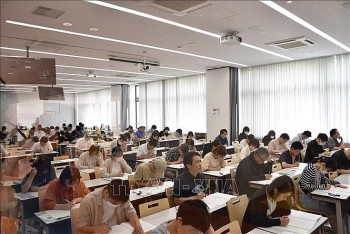 | Vietnamese Language Test Take Places in Tokyo 889 Japanese candidates took the Vietnamese-language proficiency test held at the Japan College of Foreign Languages (JCFL) in Tokyo on June 16. |
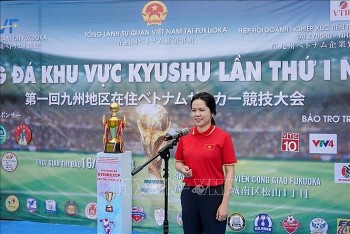 | Vietnamese Football Tournament To Open In Kyushu Region, Japan On June 16, the Vietnamese Football Tournament in the Kyushu region opened, creating a healthy playground for the Vietnamese community in Japan. |
Recommended
 Viet's Home
Viet's Home
Vietnam’s People's Public Security Force Actively Contributes to UN Peacekeeping Operations
 Viet's Home
Viet's Home
HAUFO Enhances Competence of People-to-People Diplomacy Personnel
 Viet's Home
Viet's Home
Hands that Reserve Da Long Brocade Craft
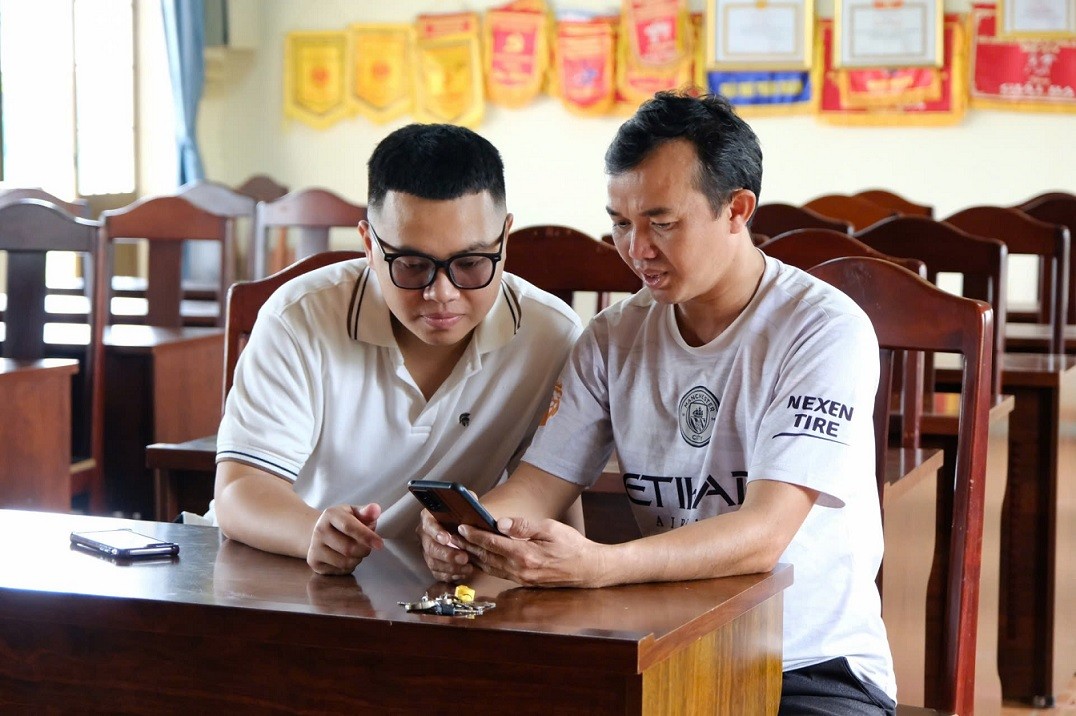 Viet's Home
Viet's Home
Da Rsal – How Digital Transformation Reshape a Poor Commune
Popular article
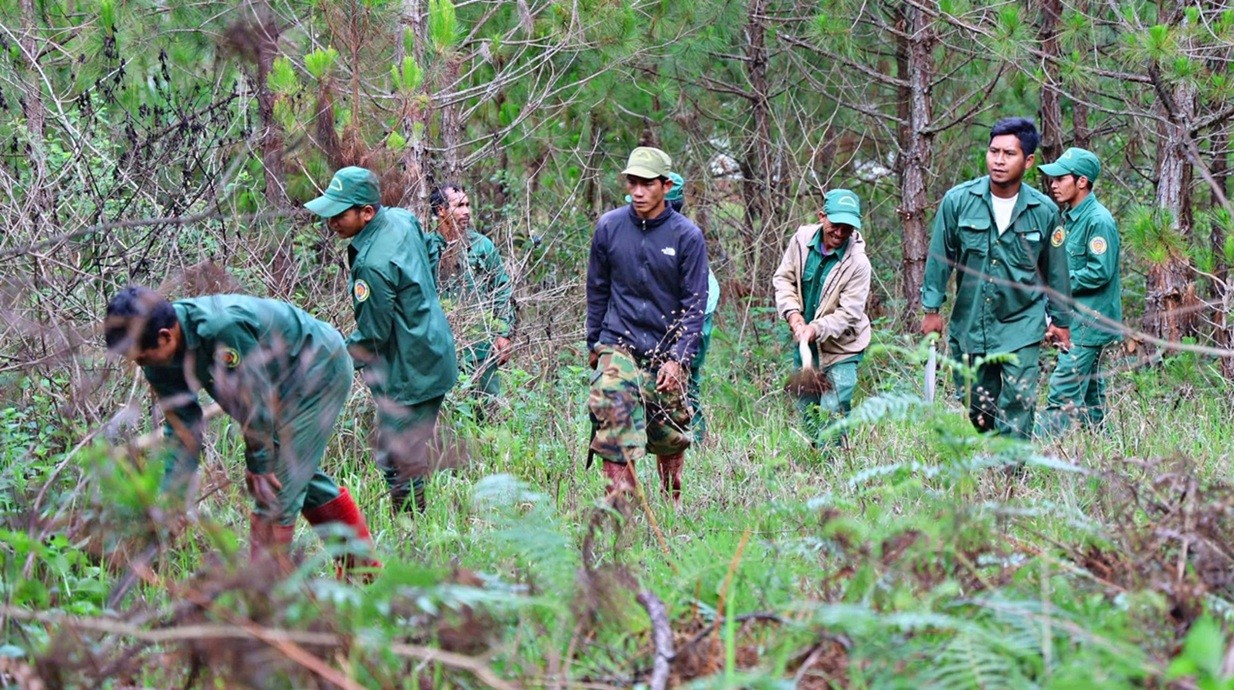 Viet's Home
Viet's Home
Vietnam Classified as “Low Risk” Under the EU Anti-Deforestation Regulation
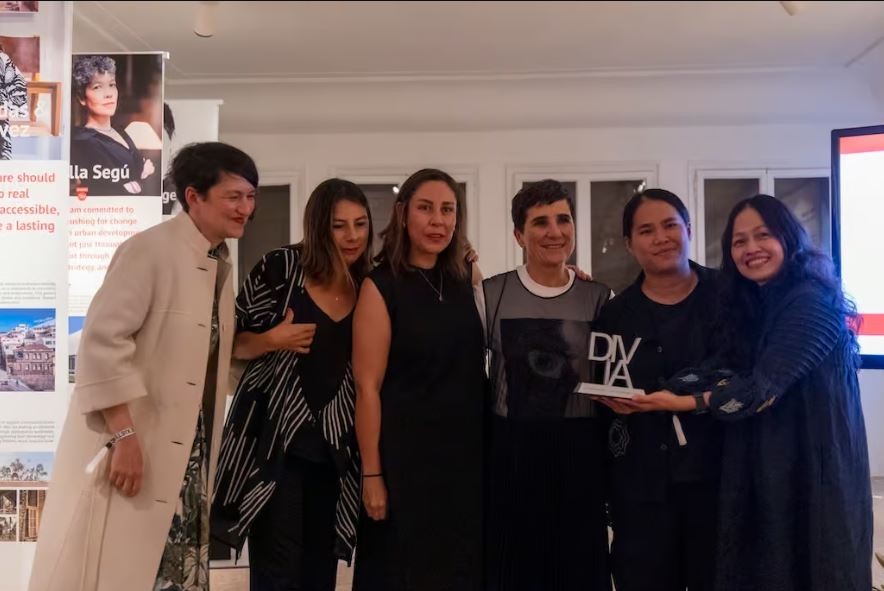 Viet's Home
Viet's Home
Vietnamese Architect Wins the Diversity in Architecture Award 2025
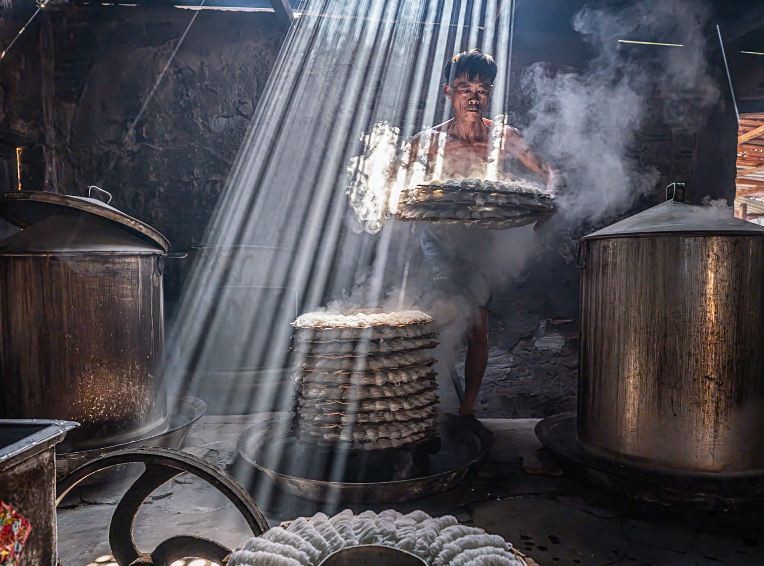 Viet's Home
Viet's Home
Vietnamese Photographer Triumph in Global Food Photography Contest
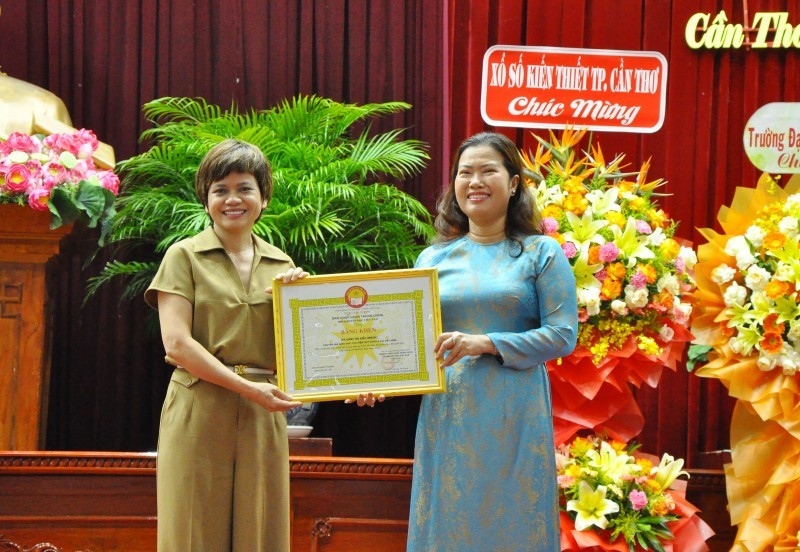 Viet's Home
Viet's Home




